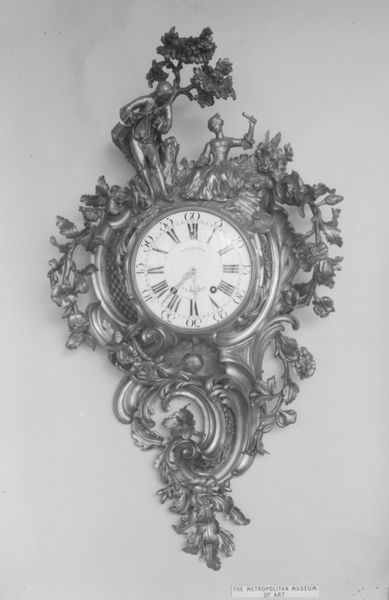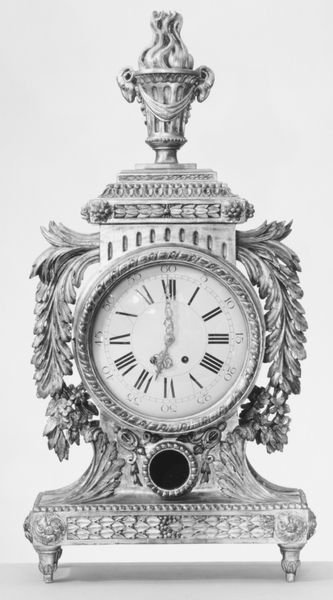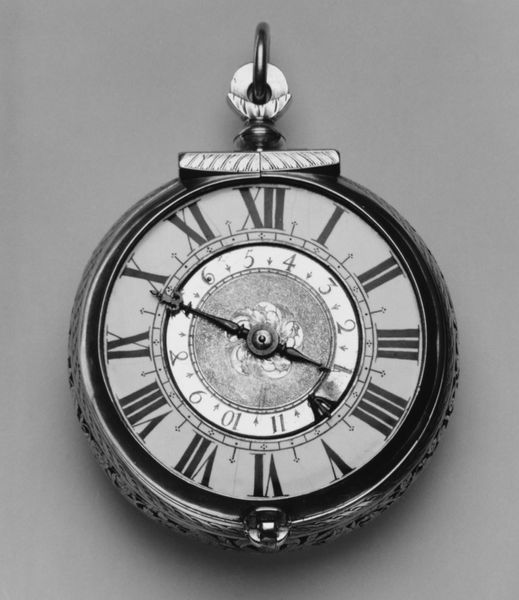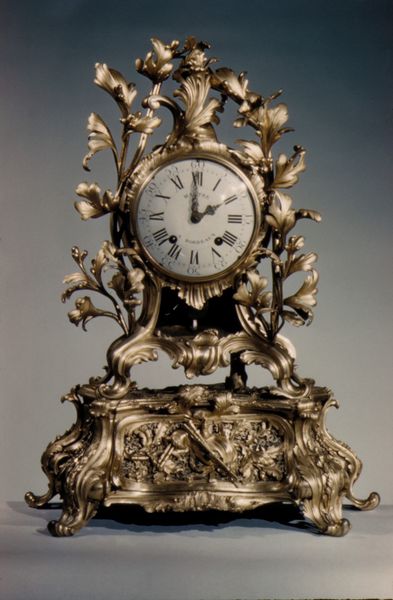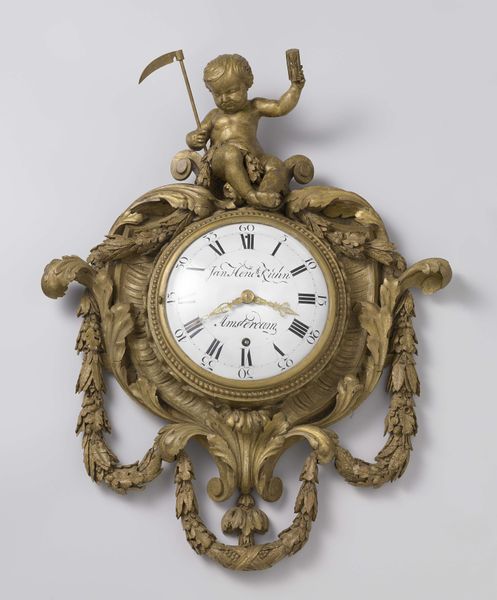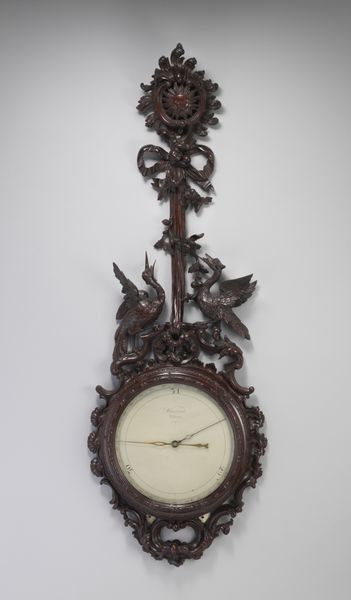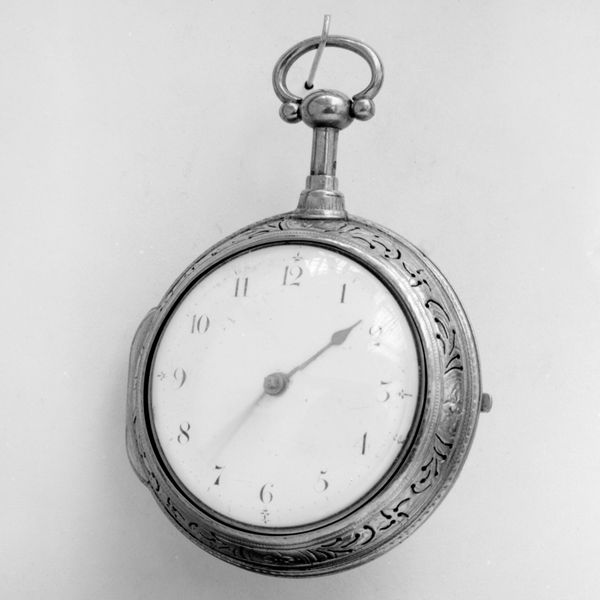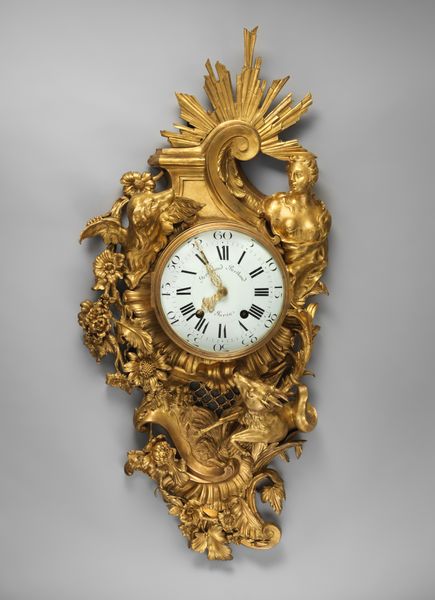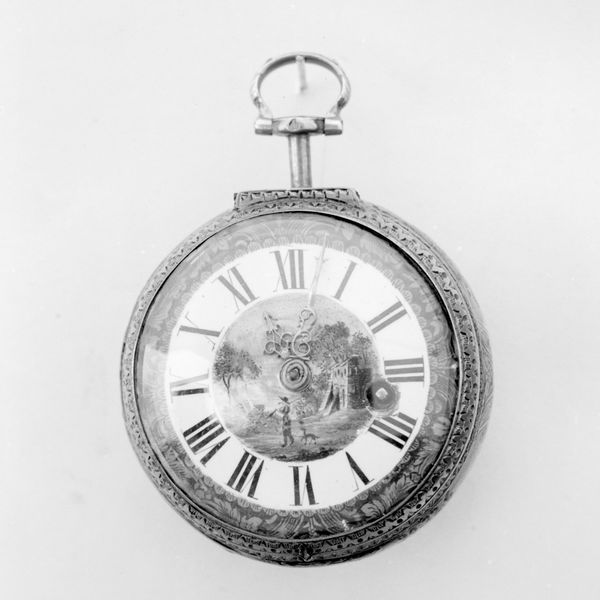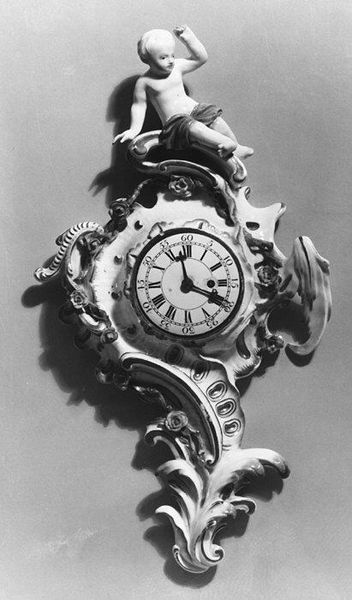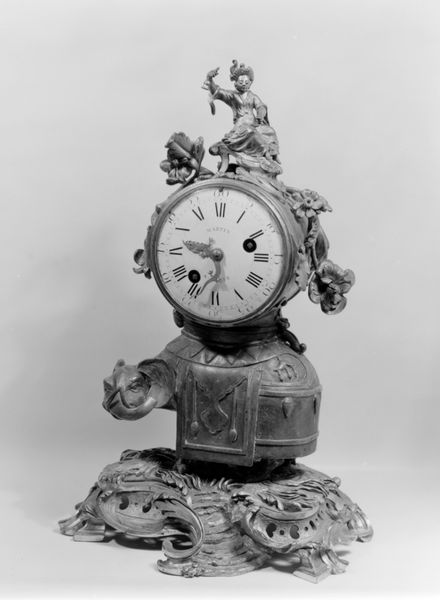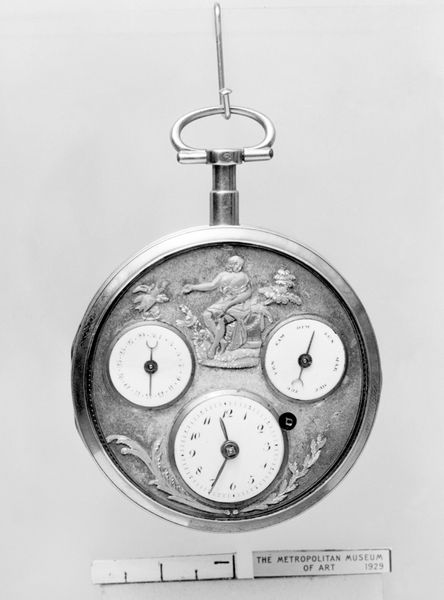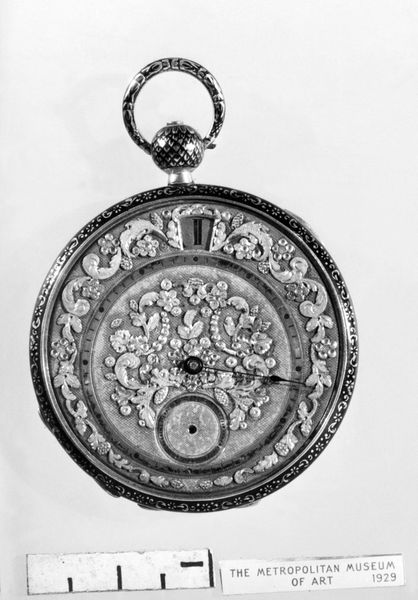
carving, metal, sculpture, wood
#
carving
#
metal
#
sculpture
#
sculpture
#
wood
#
decorative-art
#
rococo
Dimensions: 19 3/4 × 11 in. (50.2 × 27.9 cm)
Copyright: Public Domain
Jean-Jacques Fieffé crafted this wall clock, known as a cartel, in the 18th century from gilded bronze. Note how the clock is not merely functional; its flamboyant curves and floral motifs command attention. The clock’s design reveals a fascinating interplay between natural forms and rigid geometry. The circular face, marked with Roman numerals, offers a stark contrast to the organic, asymmetrical flourishes that surround it. This tension between the artificial and the natural reflects broader philosophical currents of the Enlightenment, where reason and order were increasingly valued, yet nature remained a source of inspiration and beauty. Consider the use of symmetry, or the lack thereof. While the clock face itself adheres to a strict bilateral symmetry, the surrounding ornamentation revels in asymmetry, destabilizing any sense of perfect balance. The clock challenges any fixed meaning of either functionality or pure aesthetics. It is a piece that exists in a constant state of negotiation between utility and art.
Comments
No comments
Be the first to comment and join the conversation on the ultimate creative platform.
